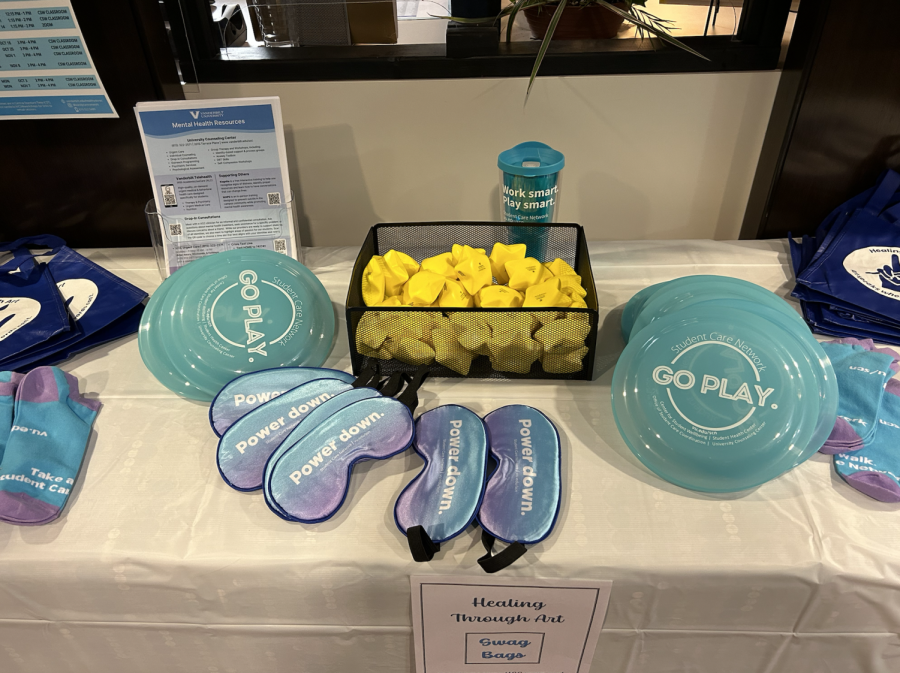Walking into the Curb Center’s latest exhibit, “Changemakers of the Twenty-First Century,” visitors are met with striking portraits of activists, leaders and pioneers who have redefined the landscape of civic engagement, justice and equality. The exhibition highlights American trailblazers in the past 25 years, showcasing protest in various forms from legislation to nonprofits to poetry. This compelling collection, selected from Robert Shetterly’s ongoing portraiture project “Americans Who Tell the Truth,” is more than an art display — it’s a student-made narrative of courage and activism. The 15 displayed portraits, chosen from Shetterly’s abundance of over 200 portraits, were selected by Vanderbilt students in “Museum Exhibition: History of Portraiture” taught by Professor Jack Crawford in fall 2024. Along with selecting and researching individual portraits, students crafted every aspect of the exhibition: they developed the premise, wrote the texts and arranged the works in the exhibition.
Among the featured figures is Michelle Alexander, a Vanderbilt alumna whose book “The New Jim Crow: Mass Incarceration in the Age of Colorblindness” ignited national consciousness about mass incarceration and racial justice. Her portrait is particularly striking — with a straight-on gaze that conveys an unflinching confrontation with the viewer — compelling them to question their prior assumptions and acknowledge the systemic injustices she critiques.
Mary Bonauto, a key advocate for the LGBTQ community and the legalization of same-sex marriage, is depicted with a quiet determination, reinforcing the power of steadfast legal advocacy in shaping fundamental human rights.
Tarana Burke, the founder of the #MeToo movement, is captured in a moment of reflection. Her expression conveys both the pain and resilience of sexual violence survivors. Her powerful words, “Shame is debilitating. Empathy stomps out shame,” are positioned across her chest, indicating that they come from the soul. The words illustrate the intentional choice to emphasize the emotional weight of her message.
Winona LaDuke, an Indigenous environmental activist and advocate, honors the theme of the exhibition through her relentless commitment to change. The earthy tones, coupled with the powerful message across the bottom of the portrait, underscore her dedication to sustainable development and protecting Indigenous lands. Her gaze, both inviting and steady, compels viewers to understand the urgency of resisting corporate and governmental exploitation.
The portraits are more than artistic renderings — they are visual statements of storytelling and modern activism. Shetterly’s brushstrokes do not merely capture faces but the deep convictions and struggles of those depicted, urging viewers to see these individuals as real people, not distant historical figures. The artist’s choice to emphasize expressive eyes and resolute postures amplifies the sense of urgency and purpose embedded in each portrait.
Beyond the artwork itself, the exhibit encourages interaction and reflection. Aiming to spark conversation regarding how we think about activism and its impact on the world, visitors are invited to engage in compelling discussions about the changemakers in their own lives and consider the ongoing legacies of the figures on display. As a result, the Curb Center transforms the traditional museum experience into an active space for dialogue and inspiration.
At its heart, “Changemakers of the Twenty-First Century” is a call to action that reminds viewers that change happens when people are willing to stand up for what they believe in. The exhibit will be open to the public Monday to Thursday, 10 a.m. to 4 p.m., CDT, and by appointment from Jan. 23 to Apr. 17. For those interested in exploring the stories of these modern activists, the exhibit offers both inspiration and a challenge: to step into the role of change-makers themselves.







